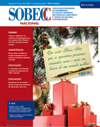Continuing education in central of material and sterilisation: meanings and difficulties faced by nursing
Keywords:
Sterilization, Education, Continuing, Nursing, TeamAbstract
The study aimed to analyzethe knowledge about Continuing Educa-tion of professionals froni the Centralof Material and Sterilization (CMS);understand, froni the perception of nurs-
ing professionals, the meaning of heingadequatelv prepared to act in CMS andidentify the difflculties liced hy nursingprolessionals iii the development of theiractivities. Data \s ere collected using struc-tured interview vith nursing professionalsoÍCMS ofa public hospital in Cajazeiras(PB). As analytical model, the techniqueof Collective Suhject Speech was used.Aniong the central ideas we highlight:unreadiness due to lack of updating:personal quest for inforrnation and quali-fication. knowledge impro\ ement, updatethemselves and provide quality ser' ice.Concludes that a new looL must fali onthe CMS, for being an extremely noblearca, eager for new knowledge. A greatercomiiiitnient to the quality of assistanceis needed, including the areness andcompetence of healthcare profissionalsand nianagers.
References
Sociedade Brasileira de Enfermeiros de Centro Cirúrgico, Recuperação Anes-tésica e Centro de Material e Esteriliza-ção. Práticas recomendadas - SOBECC.5 cd. São Paulo: SOBECC: 2009.
Alarcon CDP, Graziano KU, 1-ladiMA, Camargo TC. Contêiners rígidos:avaliação dos usuários. Re SOBECC.2005; 10(2):33-9.
Brasil. Ministério da Saúde. ConselhoNacional de Saúde. Orientações geraispara central de esterilização. Brasília:Coordenação Geral das Unidades Hos-pitalares; 2001.
Gil AC. Como elaborar projetos depesquisa. 4' ed. São Paulo: Atlas; 2002.
Minayo MCS, organizadora. Pesquisasocial: teoria, método e criatividade.Petrópolis: Vozes; 2004.
Lefévre F, Lefévre AMC. O discursodo sujeito coletivo: um novo enfoque empesquisa qualitativa (Desdobramento).2 cd. Caxias do Sul: EDUCS; 2005.
Brasil. Ministério da Saúde. ConselhoNacional de Saúde. Resolução n° 196,de 10 de outubro de 1996. Aprova asdiretrizes de normas regulamentadorasde pesquisas envolvendo seres humanos.Brasília; 1996.
Paschoal AS. O discurso do enfeniieirosobre educação permanente no grupo fo-cal [dissertação. Curitiba: UniversidadeFederal do Paraná; 2004.
Leite MM.]; Pereira JI. Educaçãocontinuada em enfermagem. In: KurcgantP, coordenadora. Administração emenfermagem. São Paulo: EPU; 1991.p. 147-6 1.
Brasil. Ministério da Saúde. ConselhoNacional de Saúde. Secretaria de Gestãodo Trabalho e da Educação na Saúde.Curso de facilitadores de educaçãopermanente em saúde. Rio de Janeiro:FIOCRUZ; 2005.
Tipple ACFV, Souza TR, BezerraALQ, Munari DB. O trabalhador semformação em enfermagem atuando em centro de materiale esterilização: desafio para o enfermeiro. Rev Esc EnfermIJSP. 2005;39(2):173-80.
Oguisso IA. Educação continuada com fator de mu-danças: visão mundial. Nursing (Sào Paulo). 200026( 1 ):26-3!.
Brasil. Ministério da Saúde. Conselho Nacional deSaúde. Política nacional de educação permanente crucomo estratégias do SUS. Brasília 2004.
Brasil. Ministério da Saúde. Secretaria de Assistênciaà Saúde. Coordenação Geral de Normas. Normas paraprojetos físicos de estabelecimentos assistenciais de saúdeBrasília: 1994.
Brasil. Ministério da Saúde. Agência Nacional deVigilância Sanitária. Resolução RDC n° 50, de 21 defevereiro de 2002. Dispõe sobre o regulamento técnicopara planejamento, programação, elaboração e avaliaçãode projetos físicos de estabelecimentos assistenciais desaúde. Brasília 2002.
Downloads
Published
How to Cite
Issue
Section
License
By publishing in Revista SOBECC, authors retain the copyright of their article and agree to license their work using a Creative Commons Attribution (CC BY 4.0) International Public License, thus accepting the terms of this license. The CC BY 4.0 license allows others to distribute, remix, adapt, and create from the published article, even for commercial purposes, provided they give due credit to the creators of the work (authors of the article).
The authors grant to Revista SOBECC the right of first publication, to identify itself as the original publisher, and grant to the journal a non-exclusive license to use the work in the following ways: (1) to sell and/or distribute the article in hard copies and/or in electronic format; (2) to distribute parts and/or the entire article in order to promote the journal through the internet and other digital and printed media; (3) to record and reproduce the article in any format, including digital media.
With this license, authors can enter into separate contracts for non-exclusive distribution of the article (e.g., publishing in an institutional repository or as a book chapter), with acknowledgement of authorship and initial publication in Revista SOBECC. Authors are encouraged to publish and distribute their work online after publication in the Revista SOBECC, as this can increase the article's visibility and impact.
In line with the journal's policies, each published article will be assigned a CC BY 4.0 license, which will be visible on the abstract page and in the PDF of each article with the respective link to the license terms.











